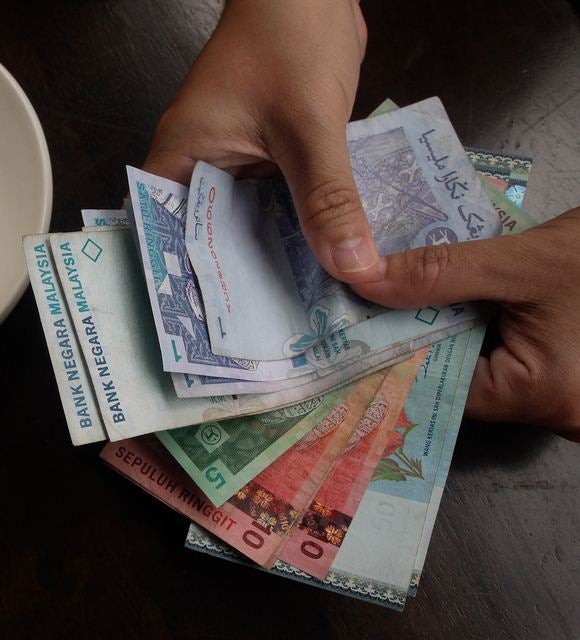
Islamic finance is growing in countries like Malaysia (Credit: Asian Development Bank, Flickr Creative Commons)
Over the last three decades, the concepts of Islamic finance have captured the attention of researchers. One of the core principles of Islamic finance is the prohibition of interest and debt-based financing. Instead, economic agents are encouraged to engage in financial instruments of risk-sharing rather than risk transfer. Although the principles of Islamic finance go back several centuries, its practice in modern financial markets became recognized only in the 1980s, and began to represent a meaningful share of global financial activity only around the beginning of this century. The growth of this market has been driven by the high demand for Islamic financial products, as well as the increasing liquidity in Gulf region due to high oil revenues. Table 1 shows the growth trend in Islamic finance for the banking sectors by different regions, with estimates of total Islamic banking assets reaching $1.8 trillion by the end of 2013. Figure 1 shows how the growth of the Islamic financial sector in 2006–10 period surpassed the growth of conventional financial sector in all segments of the market, ranging from commercial banking, investment banking, and fund management to insurance in several Muslim-majority countries.
Source: Ernst and Young (2012)
Source: Deutsche Bank (2011)
One of the recent developments in Islamic finance is the introduction of Islamic bonds, or sukuk, which are structured as a securitized product. The key feature of sukuk is that the bonds are backed by real assets or projects, and the investors’ return is based on the performance of underlying assets. Figure 2 shows the total number of sukuk and their volume over the last ten years, which is testimony to the rapid growth of this market, and its quick recovery during the global downturn. The sukuk market has been used by both the public (sovereign and quasi-sovereign) sector and corporate sector to mobilize finance. Although the size of the sukuk market relative to conventional bonds market is very small, there is great potential for further expansion, development, and innovation of this market, which could unleash the true potential of Islamic finance.
Figure 2 Total Sukuk Issuance, 2002–12
Source: Islamic Finance Information Services (IFIS)
Islamic finance and socially responsible investing (“SRI”) have been two of the most rapidly growing areas of finance over the last two decades. During this period, they have each grown at rates that far exceed that of the financial markets as a whole. Both Islamic finance and SRI are based on the concept that individuals should invest their money in a manner that conforms to their beliefs. Although both types of investors seek to achieve a strong return on their investments, they take into account not only the pure economic return, but also the social returns the society receives from their money being used in compliance with their beliefs. In other words, both Muslim and non-Muslim SRI investors are looking for their investments to make a positive impact on their societies.
Islamic finance and SRI also share another similarity that we believe creates an opportunity for convergence – each suffers from a distinct lack of liquid fixed income investment options. If a fixed income type product could be created that appeals to both sets of investors, it could fill a need for both markets simultaneously and also help bridge the divide between the conventional and Islamic financial markets. We believe the product that is best suited to play this role is a socially responsible sukuk.
Sukuk are well-suited to serve as a bridge product between Islamic and conventional finance for a number of reasons. First, the structuring of sukuk is a rigorous process overseen by several stakeholders who review each proposed sukuk to ensure that the tenets of Islam are not violated in any way. This ensures that sukuk do not finance any activity considered harmful to the society. As a result, the sukuk structuring process can be seen as having a kind of built-in SRI due diligence process that should be appealing to SRI investors.
Second, because the payments on a sukuk that are generated from the underlying asset or venture can be structured in a way that is similar to the interest and principal payments on a conventional bond, traditional fixed income investors will find sukuk familiar from a cash flow perspective.
Finally, sukuk are appropriate for SRI investors because they provide investors with a high degree of certainty that their money will be used for a specific purpose. In order to comply with the underlying principles of Islam, the funds raised through the issue of a sukuk must be applied to investment in identifiable assets or ventures. Therefore, if a sukuk is structured to provide funds to a specified development project that is appealing to SRI investors, such as a renewable energy project or a low-cost housing program, there is little chance the investors’ money will be diverted and used for another purpose.
Further reading:
Global Islamic Banking Report, Deutsche Bank






Join the Conversation